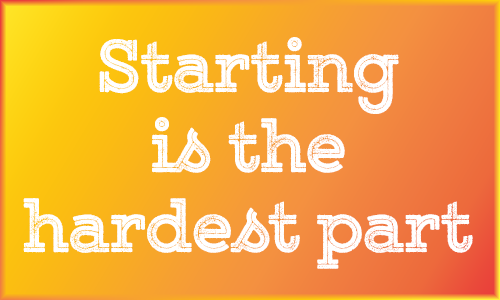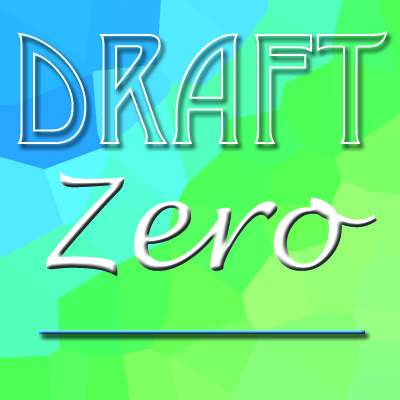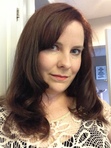Kate Larking's Blog: Anxiety Ink, page 67
May 29, 2014
Removing Abstracts: Learning from Poetics
Last week, Anxiety Ink posted this link on our social media pages (facebook and twitter): http://thewritepractice.com/learning-poets/. I have to say, this blog post struck a chord with me.
When I’m writing my first drafts, I don’t worry about what my characters are feeling or sensing in a lot of detail –unless it’s a stand out point that strikes me vividly in the moment I’m trying to get the story out. Usually I say the worst things a writer can say, for example: “she was angry about [insert too much telling],” or “he couldn’t stand the bad smell,” and “the sound was driving them crazy.” Don’t those sentences make you want to keep reading? Me either.
Yet, even when I go back and do my first edit, unless details strike me, I find myself at a loss. I leave the pages riddled with ungrounded abstracts. Honestly, I’ll do this through a number of edits. I rely heavily on words that mean nothing, like “anger,” “sadness,” “irritation,” etc.
Even while I’m editing I wonder, why is it so hard to let go of abstracts? I don’t have an answer!
That’s where the blog linked above comes in, specifically, its first header: “It’s about capturing the essence.” ESSENCE. Conveying emotion and senses is about describing those entities using things like metaphors that a reader can relate to on a visceral level rather than merely a cerebral level. If your reader understands the emotion or sense after reading the description you provide AND they can feel that emotion along with your character, you’ve done your job. Throwing nouns out there and hoping your reader can comprehend why the character is “mad” about all the events that have transpired isn’t enough. Really, it’s downright lazy.
Telling doesn’t make your reader empathize. You must show!
But it’s hard to get to that level of writing. Seriously. Hard. I actually bought an emotion thesaurus to help me with my cause. I bought an e-edition, which I regret, because I don’t crack it open like I think I would a paperback I could write in.
The second part of the blog is equally important as the first, “Moving beyond the five senses.” I’m much better at this than the first, I love playing with the tone of my stories and shifting reader perceptions using different literary devices. Loving to do this doesn’t mean I’m always successful, however.
I am not a poet by any means. I’ve been writing poetry over half my life but it’s never going to see the light of day –ever. Still, I have a high respect for poetry. It amazes me what poets can do with words I use every day merely by changing sentence rhythms, word positions, and every fancy thing I don’t know the name of. Most importantly, I think every writer –like the blog says– can learn from poetry. It’s all about elevating your writing from mundane ordinariness to something your reader doesn’t want to put down. Learning from poetics can help prose writers convey so much more and truly touch their readers.
Practice makes perfect and I know I desperately need practice! The exercise provided at the end of the linked blog sounds fantastic. In fact, check in next week to see how I did with the exercise. I got much more involved in the practice than I thought I would.
The post Removing Abstracts: Learning from Poetics appeared first on Anxiety Ink.
May 28, 2014
Starting is the Hardest Part
I have a magnet on my fridge that I bought in a stationery store (tangent: I LOVE stationery. I love writing letters. The world needs more stationery stores). It is probably one of the truest magnets I have on my fridge. True, I am fond of my “Hell is other people” magnet and my Odysseo Cavalia magnets. But this one is simple and it stands out because it’s something that has crippled me my entire life.

When I have writing to do, I can be really horrible about it. If I’m not in the groove, I leave it. I will do all the social media things an author should do, I’ll look for more research for my non-fiction. I even clean the house.
Starting is the hardest part. But when I honestly sit down, open the file, and hide all the other stuff I have been working on?
I’m gold. I’m in the groove. The black text on a white background just suddenly makes it clear that I should be writing. It doesn’t even matter which platform I am writing on. Seeing where I left off, what I need to do, keeping in mind that my goal is have a book of my own, with a cover and a spine I can grip, clean pages and ready to be read–that is all I need.
I just need to make that active choice to stop dilly-dallying and get to work.
Why is starting so hard? When, not two minutes into working on a project, I have the feeling that I’m complete? That I’ve got this. That my characters, they want their stories told. We are all in it to win it.
So why is starting so hard? I don’t know. But more a more disciplined writing practice never hurt. Open the document. Remove the distractions. And type a word…and then another…
The post Starting is the Hardest Part appeared first on Anxiety Ink.
May 26, 2014
Character Souvenirs: Another Kind Of Research
I am happy to report I survived the insane Istanbul traffic and returned safely home.
I didn’t write much while I was away. In fact, I still haven’t finished writing up all we did and saw. So many story elements! A single day gave me about four separate elements, both big concepts and small details.
But this trip had a first (well, it had many, but one, in particular): for the first time I wondered what one of my characters would want as a souvenir from this sort of trip. Or not so much wondered as looked up and knew she would want that.
This isn’t even a story I’m currently working on!
That, in this case, is a Turkish fashion magazine. Funny how much such a little thing can tell you about a person. Or in this case, a fictional character.
It tells me that she’s fairly simple and straightforward, she doesn’t like to complicate her passions, and she inhabits the opposite end of the spectrum from high maintenance. Any friend going abroad knows to bring her back a magazine. Relatively cheap and portable, in the way of souvenirs (trust me on that), when instead she could request fabric or clothing, or other things that can become a quest all their own.
FYI: in her current incarnation, she’s an aspiring fashion designer.
Most of my characters, when asked what they want as a souvenir by a traveling friend, would answer with blank looks or shrugs, or maybe something highly detailed and nearly impossible to find. Which is why she is so far the only character of mine to ever get any sort of souvenir.
This sort of discovery has woken her up from wherever my characters nap when I’m working on other stories. Now, she’s being opinionated and distracting. But she has to wait.
Her skin will be that much easier to slip into when I finally do sit down to write her story.

One of the Medusa heads in the Basilica Cistern, Istanbul, Turkey.
The post Character Souvenirs: Another Kind Of Research appeared first on Anxiety Ink.
May 22, 2014
Closing the Door: Asking for Writing Space
As the days grow warmer (FINALLY) and longer in my part of the world, I find myself searching the house for a new writing space. During the winter I usually make do with my desk, which is in my cold basement. I don’t live alone so I have one space that I can really call my own -my room. I huddle in the semi-dark in my warmest sweats/sweater/slippers combo, space heater blasting, and occasionally a cup of tea if it’s particularly ugly out and I can’t feel my hands anymore.
Depending on the time of day I manage to park myself in front of the computer, usually I can get a few hours of isolated working time in before people get home or I get restless. Lately, I’ve been working with an open door and music playing quietly because I like to be able to hear what my pets are doing if we’re home alone. Their cute faces do not fool me, they’re both part demon.
I’m realizing the more I don’t get done that this open door policy is not working at all. It’s too easy to beeline from my desk chair out the door whenever I feel like I don’t want to look at my screen anymore. To cinch it, when everyone else was home this weekend I shut my door and wore my headphones, which resulted in my most prolific writing period in a number of weeks.
In the face of such evidence, I assembled a door sign and hung it up. It didn’t prevent my mother from strolling into my room (laughing about my sign), but it started a dialogue about what I’m actually trying to accomplish while I’m in my room. I’m hoping people will think twice about interrupting me. As for pets, I have a second door into my room that’s always open so they’ll be fine. They can’t read so they’re off the hook.
BUT, like I said in the beginning of this post, winter is over. At the end of winter I like to start writing in the dining room so I can enjoy the warmth and sunshine. Without the furnace on my room is an ice palace. I’ve come upstairs during the summer dressed in full winter regalia only to be hit by a wave of 30 degree heat. It messes with the body.
My point is, I don’t know how to implement a closed door policy on a room without a door and one that has the main entrance to my house in it! The obvious answer is to only work there when I’m home alone and put my headphones in if I’m not. My biggest obstacle is probably my discipline at this point. I’m happy to report it’s getting much better, at least.
I’m curious how other writers outline their writing spaces. How do you define your space and tell people in your life that you’re working and don’t want to be disturbed? You know, without being rude about it.
The post Closing the Door: Asking for Writing Space appeared first on Anxiety Ink.
May 21, 2014
Switching Writing Projects
I’ve had a busy month. I’ve worked on several different projects. I have been working on my Novel Marketing book for about two months, coupled with a fantasy idea during those last two months as well, and the occasional short story and freelance article.
I finally finished the first draft of my Novel Marketing book, hit a bit of a tight spot on my romance fiction draft–and I’m bursting with ideas. Tons, really. More than I’ve had in years.
But I have a to-do list a kilometer long and a lot of ambition. So how can I about switching writing projects from non-fiction to fiction, and then between fiction projects? Even if I’m really sick of a story?

The switching technique came to me quite unexpectedly. In learning about Tumblr for my Novel Marketing book, I decided to play around a bit and build one.
At first, I had to refurbish a few old blogs on there, clean up my account, etc. Then, I realized that this was the perfect social media for my YA book I plan to edit this year, interWIRED. So I looked up cyberpunk fashions to start my base on there.
After posting a few images, inspiration and ideas, characterization and setting slammed into my like I’d finally made it through a wall that had been stopping me from working on this project for some time. The image-centric brainstorming came easily. I started up a secret board on my Pinterest account, too, building it for a launch.
I’m excited to get back into my interWIRED story now. Really, I thought I wouldn’t ever be able to shake off the story exhaustion. But I totally have and I’m excited to have this tool so I can really understand my genre as well as my mindset.
What about you? How do you juggle your ideas and switch from one story to the next?
The post Switching Writing Projects appeared first on Anxiety Ink.
May 19, 2014
“See The World,” They Said
I don’t often have the opportunity to travel someplace where I’ve already decided to set a story. Usually, I go and only later does that locale crop up as a story setting.
Last week was about the latter. This week, I discuss the former.
Whether you’re a travel writer or writing a fantasy novel, you should start with — say it with me now — research! A trip is a luxury, and you’re going somewhere you wouldn’t normally go, and chances are you’ll have limited time, so efficiency is vital. Research — even a quick Google search or skimming of the wiki (trust me: you don’t need to be an expert, and it’s often better that you’re not) — will help immensely with efficiency.
Also, knowing the story you want to tell. That helps.
As this goes up on the site, I am in Istanbul, exploring and adding to the library in my head from which I pull and build my stories. I don’t have a story yet to set in Istanbul (though maybe I will, after). But last year when I visited Ecuador, I did.
I had never been to Ecuador before, but I knew it was where I wanted to set this short story. I knew the general plot. I spent less than an hour on research and started writing before I ever left.
Later, I scrapped all of that early writing, but it allowed me to figure out what I wanted.
It was like being a location scout for a film project. I took reference photos of some of the strangest things, like a three-sided billboard that would make an excellent perch for someone to whom gravity is no issue. One plaza, the moment I saw it I knew it would be in the story. It’s actually the opening scene.
The story’s action never leaves Quito, and the whole time I wandered and explored the city, my character was there. I thought about what she would notice, how she would react, and what she would use to her benefit.
I think I became aware of more details — certainly different kinds of details — looking at the city through that extra lens.
But I didn’t write a single word of story until I came home. I needed that time to absorb the textures and colors and smells and for my character to settle in and make herself at home. Then I wrote the story that I’m still decently proud of.
(Shameless self-promotion: it’s called A Trick of Shadows, published in the Kickstarter-funded Fight Like a Girl anthology. Kate has an amazing story in it, too. Extra reason to check it out!)
Being a location scout for my own story was ridiculously fun. I can’t wait to do it again!
The post “See The World,” They Said appeared first on Anxiety Ink.
May 15, 2014
How Many Read-Throughs Are Enough?
As far as I’m concerned, you can never read through your work too many times. Ever. The notion is incomprehensible to me. When I edit, I imagine that that finished project is the me I am presenting to the world. My intention is to put my best foot forward, but of course I’m going to miss something. I can read the same piece a million times in a row and miss the same mistake each time –mostly because my brain knows how the wrong part is supposed to read versus catching the error. Everyone does it.
This phenomenon I can forgive –and actually taking breaks between re-reads of your work will help this problem. It’s people who spew words and then forget about it, or seem to do that, that are starting to get on my nerves. If you’re not a good grammarian and/or line editing isn’t your thing, ask someone else to do it.
I will not point fingers, but I’ve read too many works lately, both fiction and non-fiction, published and posted on the internet, where basic sentence errors run rampant –RAMPANT. As a reader who is giving someone my time I don’t think it’s too much to ask that person to make my reading experience as easy as possible. My time is really valuable to me and I have a ton of other stuff to read. If I have to stop and re-read your phrases four times to figure out what you’re trying to say in your FINISHED product, you’ve lost me and irritated me.
With the invention of spell checkers that also catch general grammar problems, I’m less forgiving.
This has turned into a bit of a rant so I will take a deep breath and try to get on a constructive path.
There is no magic number of times you can or should read your piece before sending it out into the world to be read. Even my personal number varies per project. Sometimes I can do two or three edits, sometimes I need 14. The point is I read –and read again– until I can’t see anything wrong. Once more, that’s not to say that nothing is wrong, just that I know the piece so thoroughly that I can’t see straight anymore.
I do have a rule of thumb I go by, besides taking breaks between edits: if you think you’ve got it down and don’t need to read your piece again, do a read–through one more time minimum.
Now of course I have to ask what other people think! I’d love to hear from readers about their takes on editing errors. And writers, if you’ve got ideas and/or editing tips, share them!
The post How Many Read-Throughs Are Enough? appeared first on Anxiety Ink.
May 14, 2014
Draft Zero – Zero Draft
I’ve fallen in love. Despite being married, I have fallen in love all over again.
With outlining.
Not
This
Type
Of
Outlining
I always wanted to be a pantser. I thought it was so cool that someone could write something and it would all just work out. Maybe that seemed so neat because it was so elusive for me. I would start, stop. Restart, stop. Restart again, stop. I would waste days of productivity trying to figure out where my story was going and what scenes were important.
So I decided to outline, my way. Draft Zero.

So here is how I went about Zero Drafting, or Draft Zero, Kate point oh.
Start writing. What is the premise that got you started? Write out the idea. Just wring it out of your brain and start adding to it.
Just get the idea down. Hit a part where you need to make a name? Five symbols together %%%%% and you can find-and-replace them later once you take the time to get the name right. Spelled something incorrectly? Keep going
If you have alternating point of views, group your sentences in paragraphs so you can block out the alterations.
It won’t all be uniform in type or depth. Sometimes it’s a broad idea like, “Chase scene.” Other times, I’m drilling down to dialogue because a certain set of words came to mind to link back to a previous scene.
Forget grammar. For some reason, my draft zeros come out as present tense–a tense I never write in for novels. I tried to fix two sentences before I realized I was fighting the process. You’ll know what the verb means no matter what tense it is in. Just get it out.
So, I, Kate Larking, am a reformed pantser. I like structure. Some people claim that outlining takes the magic out of the writing process and takes away all the surprises of writing. But Draft Zero, Zero Drafting, whatever you want to call it, worked for me. It means I can write the full draft before I lose my passion with the story due to frustrations over dead ends.
Does this mean I won’t hit bumps? Absolutely not. I did hit one, actually. And I wrote about it on my personal blog.
The post Draft Zero – Zero Draft appeared first on Anxiety Ink.
May 12, 2014
How To Travel As A Writer
Travel is an awesome way to enrich your writing. But how to make the most of it?
In high school, I went on a trip knowing the experience would possibly make it into a book for the first time. I spent the whole trip with my nose in a notebook. Hard to say how much I missed. I came away with words on a page, none of them adequate or doing justice to what we’d seen and done.
Being so busy trying to capture everything in words on a page, I came away with very little that I will ever be able to use. At the time, I thought I just wasn’t trying hard enough.
I don’t know about you, but my brain takes time to synthesize new experiences. Sometimes days, sometimes weeks or months, or even years. Scribbling down words doesn’t hurry the process any.
And it’s not about the words. It’s about the sights, the sounds, the smells; what it makes you feel and think. To write that — to communicate that — you have to experience it. (Note: I am not saying you can only write things you’ve experienced! In this post, I am only speaking in context of experiences that inform writing.) Scribbling words ends up removing you from the experience.
A notebook goes with me everywhere, but it stays in my bag most of the time. It only comes out when a story element hits.
Everyone is different in what works and doesn’t, but I’m a fan of setting the notebook aside to be as present in the moment as possible. Whether or not I write them down, those thoughts and impressions and images stay with me. They will help build my fantasy worlds.
When I travel, I want to see, and touch, and smell, and explore all I can. At the end of the day, I’ll write it down.
This has made for some fantastic trips and some fantastic story inspiration.
The post How To Travel As A Writer appeared first on Anxiety Ink.
May 8, 2014
Birthdays Mean…Self-Evaluation!
It was my birthday on Wednesday (woot?!), so I thought it would be a good idea to share some of my thoughts. I write a little self-evaluation or contemplation note to myself almost every year; in it I go over things like major accomplishments, setbacks, goals and feelings about where I’m at in my life. This year is special –I have a blog on which to post writing related thoughts!
It was a busy year, so busy in fact that as I think back I can’t believe it was just one. I got through a major presentation involving a project very close to my heart that required PUBLIC SPEAKING IN FRONT OF STRANGERS; I finished university; I graduated with a BA (a BA!); I adopted my fur babies; I attended my very first writing conference that sparked so much on the creative front for me; I launched Anxiety with two awesome partners (seriously, I couldn’t have asked for better people who are equally dedicated); I got a post-graduation job that I don’t feel is sucking away my soul (most days); I’ve submitted a short story that may see the published light of day; and, I have stories in the works that I intend to get published down the road.
See? Seriously busy!
In short: I’m living my writing dream, just the way I’ve wanted to since I was little. Ok, not exactly the way I envisioned when I was a kid, but who cares? I’m getting there. Most importantly: I’m moving forward.
I debated writing about my publishing goals in this post but decided against it. I haven’t put my designs to paper yet and I don’t think this is the time or place. Time, because my life is still in too much flux (if you can believe it). Place, because if I put them here and things don’t work out in the narrow time frame I know I’ll give myself, I’ll feel like an enormous ass not to mention an epic failure.
However, since Anxiety Ink is designed for writing-craft-talk, I will say that I intend to have something published by the time I’m 30. That gives me a huge window to work in! I love cheating the system.
I don’t have any new goals to announce. I’m still on track with the ones I set for the New Year –“on track” meaning still trying to get those ones accomplished. Right now I’m focused on organizing. My life needs dramatic organizing at this point.
It’s been a long, exciting year and I hope the next one is equally so!
Now the big question: am I the only one that evaluates themselves on their birthday? It can be a bit of a buzzkill but I feel it’s important…
The post Birthdays Mean…Self-Evaluation! appeared first on Anxiety Ink.
Anxiety Ink
- Kate Larking's profile
- 53 followers



